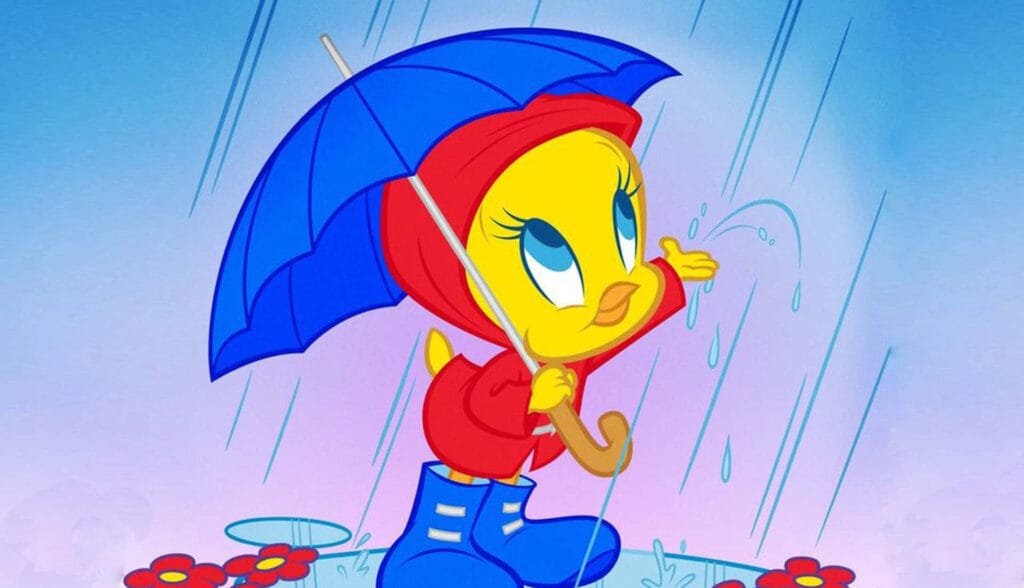Tweety Bird is undeniably one of the most lovable and enduring cartoon characters of all time. The little yellow canary, who first charmed viewers in the Looney Tunes series, has stood the test of time as a pop-culture icon. With its unmistakable catchphrase “I tawt I taw a puddy tat!” and its comedic battles with the feisty Sylvester the Cat, Tweety Bird captured the imagination of audiences across generations. Let’s take a deep dive into the history, legacy, and fun facts about this adorable feathered superstar.
The Origin and History of Tweety Bird
Tweety Bird, created by Warner Bros., made its debut in 1942 in the animated short “A Tale of Two Kitties,” directed by Bob Clampett. Originally known as “Orson,” the character had a raw and somewhat aggressive demeanor. Interestingly, Tweety was not initially envisioned as a canary but more of a generic bird with a rebellious streak.
As time went on, Tweety’s appearance and personality underwent significant changes. The feathers were added to give him a softer, more child-friendly vibe, and he officially became the yellow canary we all recognize today. By 1947, under the direction of Friz Freleng, Tweety became a regular in the Looney Tunes lineup, often paired with Sylvester, marking the beginning of an iconic comedic duo.
Why Tweety Bird Became a Cultural Phenomenon
From the start, Tweety stood out as an unlikely hero. The tiny, seemingly innocent bird often outsmarted larger, more menacing adversaries, particularly Sylvester. This unique juxtaposition of vulnerability and cleverness struck a chord with viewers. It symbolized how even the smallest beings can triumph with wit and determination—a lesson that resonated universally.
Tweety’s cultural impact isn’t just limited to cartoons. The character has inspired merchandise, memes, and even philosophical reflections on resilience. Beyond just being an adorable face, Tweety became a mascot of cleverness, courage, and humor.
Memorable Tweety Bird Episodes
Many Tweety Bird episodes remain etched in the minds of cartoon enthusiasts. Here are a few standout episodes that display the character’s charm:
- “Tweetie Pie” (1947): This was the first animated short that won an Academy Award, solidifying Tweety and Sylvester as a fan-favorite pairing.
- “Bad Ol’ Putty Tat” (1949): Showcasing Tweety’s clever side, the bird builds ingenious traps to protect itself from Sylvester.
- “Birds Anonymous” (1957): This episode cleverly satirized addiction, earning an Oscar for its relatable humor and creative storytelling.
These classics showcase why Tweety Bird remains a timeless icon in animation.
Tweety Bird’s Character Evolution Over Time
Initially depicted with a slightly aggressive and mischievous personality, Tweety Bird evolved into a more delicate and innocent character as the cartoons progressed. The changes to Tweety’s look—rounder eyes, softer feathers, and a smaller beak—further emphasized its cute and childlike attributes.
Personality-wise, Tweety became gentler and less combative while retaining its sharp wit. Despite appearances, Tweety was never a pushover. It managed to outwit its foes using intelligence rather than physical strength, creating a dynamic character that audiences couldn’t help but root for.
Fun Facts
Here are some lesser-known facts about Tweety Bird:
- Tweety’s name was initially derived from “sweetie,” with a playful twist, referencing its high-pitched voice.
- The voice behind Tweety was Mel Blanc, also known for voicing Bugs Bunny, Daffy Duck, and other Looney Tunes characters.
- It was modeled after an image of Bob Clampett as an infant—he cheekily revealed that its original design was “naked!”
The Timeless Partnership of Tweety Bird and Sylvester
The comedic tension between Tweety Bird and Sylvester is the cornerstone of their appeal. This “cat-and-canary” dynamic offered a fresh take on slapstick humor. Sylvester’s relentless pursuit and Tweety’s witty defense created entertaining storylines filled with surprises.
What made their partnership particularly memorable was the balance of roles: Tweety, though smaller, wasn’t helpless. The character’s cleverness consistently foiled Sylvester, creating a relatable underdog narrative.
Tweety Bird’s Impact on Pop Culture
Tweety Bird didn’t just live in cartoons; it became a prominent symbol in pop culture. The character has graced countless toys, clothing items, and home décor products. Notably, Tweety’s image has become popular in tattoos, especially during the 1990s, as a representation of innocence or resilience.
Beyond merchandise, Tweety Bird has also inspired internet memes, art, and parody skits in modern times. Its universal appeal makes it just as relevant today as it was in the 1940s.
Tweety Bird’s Signature Catchphrase
One cannot talk about Tweety Bird without mentioning the catchphrase, “I tawt I taw a puddy tat!” This delightful phrase not only highlights Tweety’s distinct baby-like voice but also adds a humorous layer to its interactions with Sylvester.
The iconic quote remains one of the most quoted lines in animated history, standing shoulder-to-shoulder with other famous phrases like Bugs Bunny’s “What’s up, doc?”
Life Lessons from Tweety Bird
What can we learn from Tweety Bird’s adventures? Quite a lot, actually. Here are some valuable lessons:
- Small but Mighty: Tweety taught us that physical size doesn’t dictate ability.
- Think Before You Act: By outwitting Sylvester, Tweety emphasized the importance of using wit over brute force.
- Resilience Is Key: Tweety never gave up, no matter how relentless Sylvester was.
Why Kids Love Tweety Bird
Tweety Bird’s childlike innocence and endearing personality make it an instant hit with kids. Its soft voice, bright yellow feathers, and mischievous humor create a character that’s both relatable and fun to watch. Children love seeing how Tweety manages to stay one step ahead of its foes, providing a great source of entertainment.
Tweety Bird Collectibles and Memorabilia
Fans of Tweety Bird can find a treasure trove of collectibles, including figurines, plush toys, clothing, and mugs. Vintage Tweety Bird items are especially sought-after, with some pieces even considered valuable among collectors.
Modern Adaptations of Tweety Bird
Though initially a classic character, Tweety it seamlessly transitioned into modern media. The character has appeared in newer shows like “The Looney Tunes Show” and “Space Jam: A New Legacy.” These adaptations reintroduce Tweety to a new generation while preserving the charm and wit that fans have loved for decades.
What Makes Tweety Bird a Looney Tunes Legend?
Tweety Bird remains a standout figure in the Looney Tunes universe due to its multidimensional personality and relatability. Whether as a clever underdog or a source of comic relief, Tweety consistently brings joy to viewers.
Also read: Frank Csorba Death: Insights, Legacy, and Unanswered Questions
Conclusion
Tweety Bird isn’t just a cartoon character; it’s a symbol of wit, courage, and timeless charm. From its humble beginnings in the 1940s to becoming a global pop culture icon, Tweety has inspired countless generations with its humor and tenacity. Whether through cartoons, collectibles, or catchphrases, this little yellow canary continues to leave an indelible mark on the world of animation and beyond.
FAQs
Who created Tweety Bird?
It was created by Warner Bros. animator Bob Clampett and first appeared in the 1942 short “A Tale of Two Kitties.”
Why is Tweety Bird yellow?
Originally featherless, Tweety was given yellow feathers later on to make the character more visually appealing and child-friendly.
What is Tweety Bird’s relationship with Sylvester?
Tweety and Sylvester share a cat-and-canary rivalry where Sylvester tries to catch Tweety but always ends up outwitted.
Is Tweety Bird male or female?
Tweety Bird is typically identified as male, although its gender has occasionally been portrayed ambiguously.
What awards has Tweety Bird won?
Tweety Bird’s first episode with Sylvester, “Tweetie Pie,” won an Academy Award in 1947 for Best Animated Short Film.
Why is Tweety Bird so popular with adults?
Tweety’s humor and underlying themes of cleverness and resilience make it appealing to adults as well as children.



